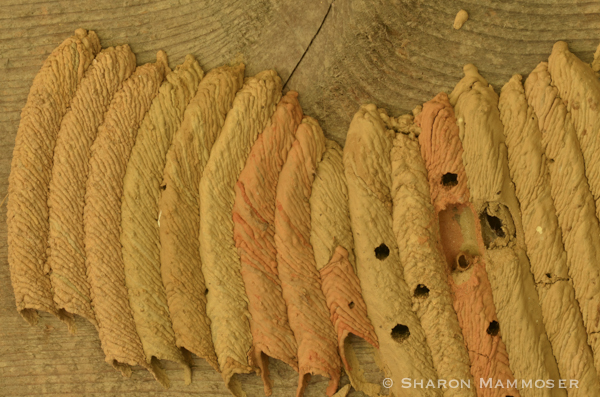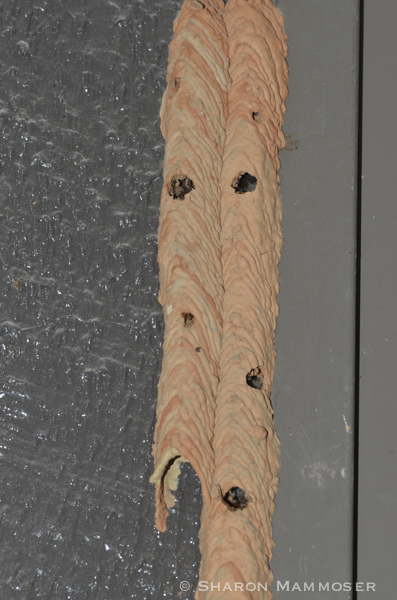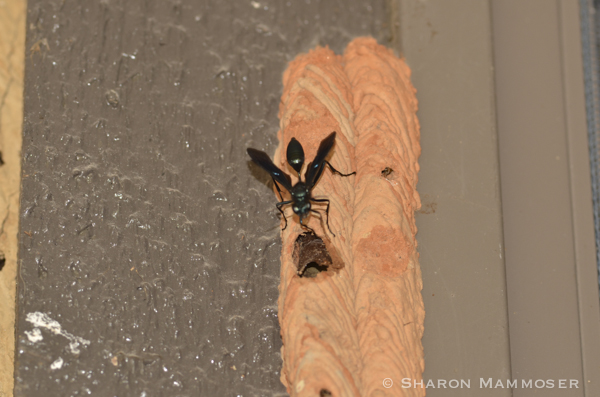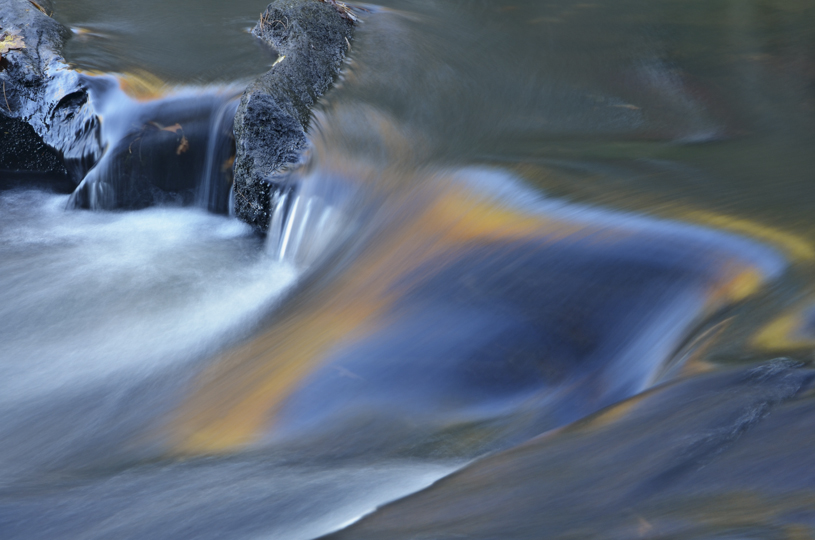A few people knew the answer to last week’s puzzler. Were you one of them?

If you came to my house for a visit, you would find many, many of these small tubes around the property–they are on our house in numerous places and on the walls of a small pavilion in the front yard. When we see them, we let them be, knowing enough about the insects who make them to know they do us no harm. In my opinion, their tunnels are amazing works of art!
The insects responsible for them are called organ-pipe mud daubers, or, Trypoxylon politum. Other common names include dirt daubers, and blue devils, though the latter name couldn’t be more incorrect, as this beautiful iridescent blue/black wasp is solitary and is not likely to sting a person unless you attempt to hold her in your hand or grab her. Mud daubers are an inch long,

blueish black with a thin waist.
Mud dauber females gather mud and especially, clay, which they fashion into long half-inch wide tubes that resemble organ pipes, hence one of their common names. Next, they go out and search for spiders, usually orb-weaving spiders, that they will paralyze and bring back to their clay tubes. They will put 1-4 spiders inside, then lay an egg and seal the tube with more clay. So in each long tube you see in the picture below,  there will be several chambers, each with some spiders and an egg. When the egg hatches into a larva, it will consume the spiders until it forms a pupa and will then overwinter in the tube. Come spring, it will emerge as an adult
there will be several chambers, each with some spiders and an egg. When the egg hatches into a larva, it will consume the spiders until it forms a pupa and will then overwinter in the tube. Come spring, it will emerge as an adult  and chew its way out of the tube to fly off and continue the lifecycle.
and chew its way out of the tube to fly off and continue the lifecycle.
Interestingly, there are other insects, mainly some flies and other wasps who are just like the brown-headed cowbird. Remember that puzzler from last week? The female doesn’t create a nest but instead, lays her eggs in other birds’ nests? Well these other insects– kleptoparasites as they are called (they steal food) — just like the cowbird female, will watch the mud dauber female and when she leaves to go find more spiders, will lay eggs in the mud daubers’s tube! Then, her eggs will hatch and devour the spiders, leaving no food for the mud dauber larva, who then will die.
Sometimes birds will raid the tubes during the long winter months, looking for a small bite to eat. Thus, a hole in the tubes before spring might indicate a bird has been by.
I can’t help but shake my head in amazement at the adaptations of animals! So many interesting life cycles! And ways to survive.

There are other species of wasps who also make structures in which to lay eggs and provide invertebrate food for their growing young–for instance, check out these tiny pots in the photo here. They are made by potter wasps and just like the organ-pipe mud daubers, they make the structures from clay and then provision them with food–not spiders, but beetle larvae or caterpillars, which they paralyze and leave inside the pots along with an egg…. and then of course you probably can guess that when the egg hatches out into a larva it consumes the insect and then eventually emerges from the pot and flies off as an adult…. Amazing, right!
Have you ever seen these tiny pots? Or the long, mud dauber tubes? Well next time you see them you’ll know a bit more about how they came to be and who made them!
Check out the next puzzler HERE…. and as always, have a great weekend!

